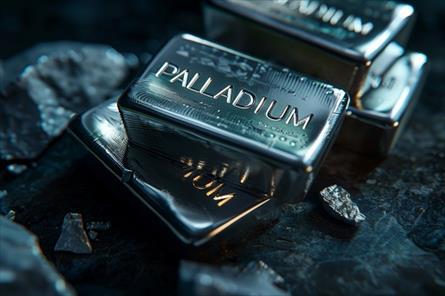Testing Palladium at Home: A Guide to Determining Authenticity
While silver and gold are the most commonly admired precious metals, there are other valuable metals to consider. Palladium, a rare precious metal from the platinum family, offers numerous advantages for both investment and the purchase of products like jewelry and electronics. Read on as the precious metals experts from First National Bullion and Coin, the palladium, silver, platinum, and gold dealers Scottsdale residents trust for outstanding knowledge, explain how you can determine the quality and purity of the precious metal at home using the methods below.
Acid Test
Due to its accuracy and simplicity, this is a highly popular at-home testing method for palladium. The acid testing kit you buy should include instructions as well as testing stones and solution. Start by gently scratching or rubbing your palladium piece directly against the surface of the testing stone. The precious metal should leave a mark on the stone. If it doesn’t, you haven’t scratched it accurately. Once there’s a visible deposit, you can move on to the acid aspect of the test.
Changes occur as soon as the testing acid is dropped on the stone. The streak of the acid will determine the purity of your palladium. For example, if you don’t notice the testing stone turning a yellowish-green color, there’s typically no palladium content, and the streak will completely fade away. However, a yellowish-green streak that remains or dissolves slowly indicates pure palladium.
Electronic Precious Metal Testers
While they may be pricey, electronic precious metal testers are dependable and nondestructive. Simply follow the instructions and allow the technology to provide results within seconds.
The tester will measure the electrical conductivity of the palladium by passing a small electrical current through the precious metal. The way the current passes through will determine its authenticity. The electronic precious metal testing device will measure the resulting resistance in relation to the known resistance standard for palladium to determine the purity level.
Iodine Test
Iodine has a unique reaction to palladium, which is why many people use this test at home. If palladium comes into contact with iodine, it will form palladium iodide, which is a black compound.
The steps are simple, as you only need to clean the surface of the metal you’re testing. Once all dirt and oils have been removed, apply a small drop of iodine to it and watch to see how the metal reacts. It if turns black, the presence of palladium is indicated.
Magnets
You can test palladium at home with a suitable magnet. It’s best to use a strong neodymium magnet to increase accuracy. The objective is to observe whether the magnet attracts the metal, and the desired result is for it to remain unattracted. If it is, you don’t have a pure piece of the precious metal, as palladium isn’t magnetic. This test alone isn’t conclusive, and you may need to use one of the other options mentioned above or speak with a professional to ensure you have a pure piece.
If you need advice on how to test palladium or you’re looking for the best place to purchase Scottsdale silver bars, gold coins, and other forms of precious metals, reach out to the trustworthy professionals at First National Bullion. We can answer all your questions and help you find all the information you need on how precious metals can be great investments. Give one of our experienced dealers a call today.
The statements made in this blog are opinions, and past performance is not indicative of future returns. Precious metals, like all investments, carry risk. Precious metals and coins may appreciate, depreciate, or stay the same in cash value depending on a variety of factors. First National Bullion does not guarantee, and its website and employees make no representation, that any metals for sale will appreciate sufficiently to earn the customers a profit. The decision to buy, sell, or borrow precious metals and which precious metals to purchase, borrow, or sell are made at the customer’s sole discretion.


